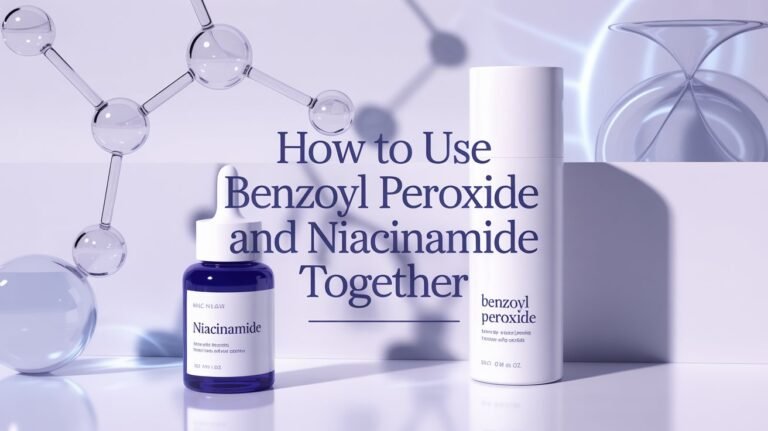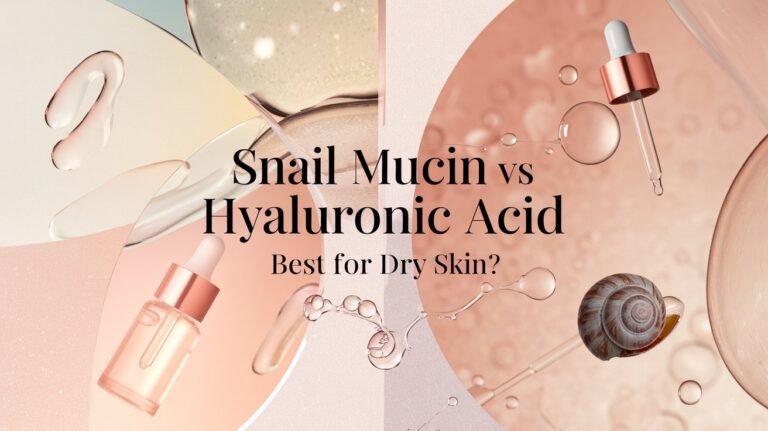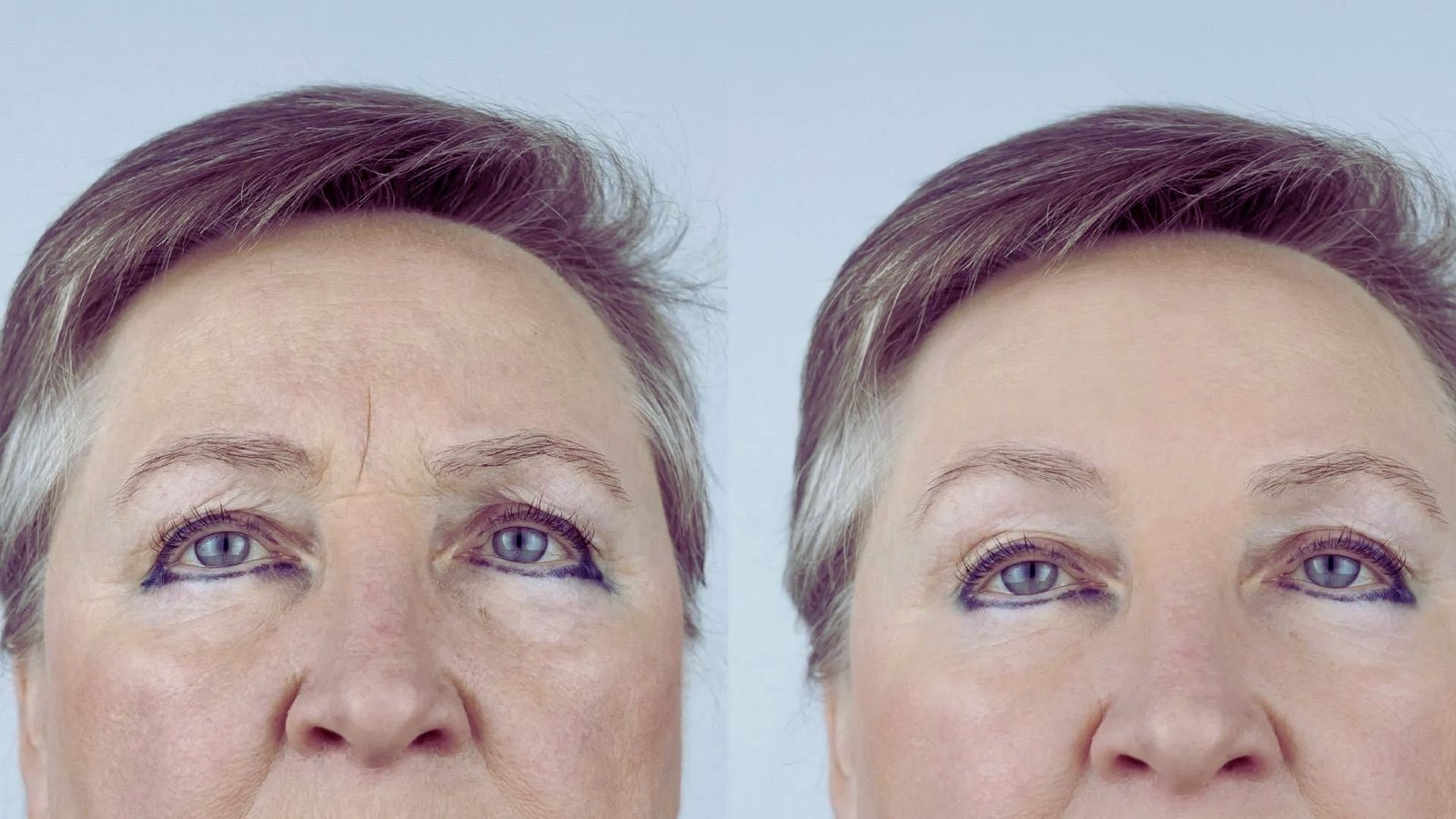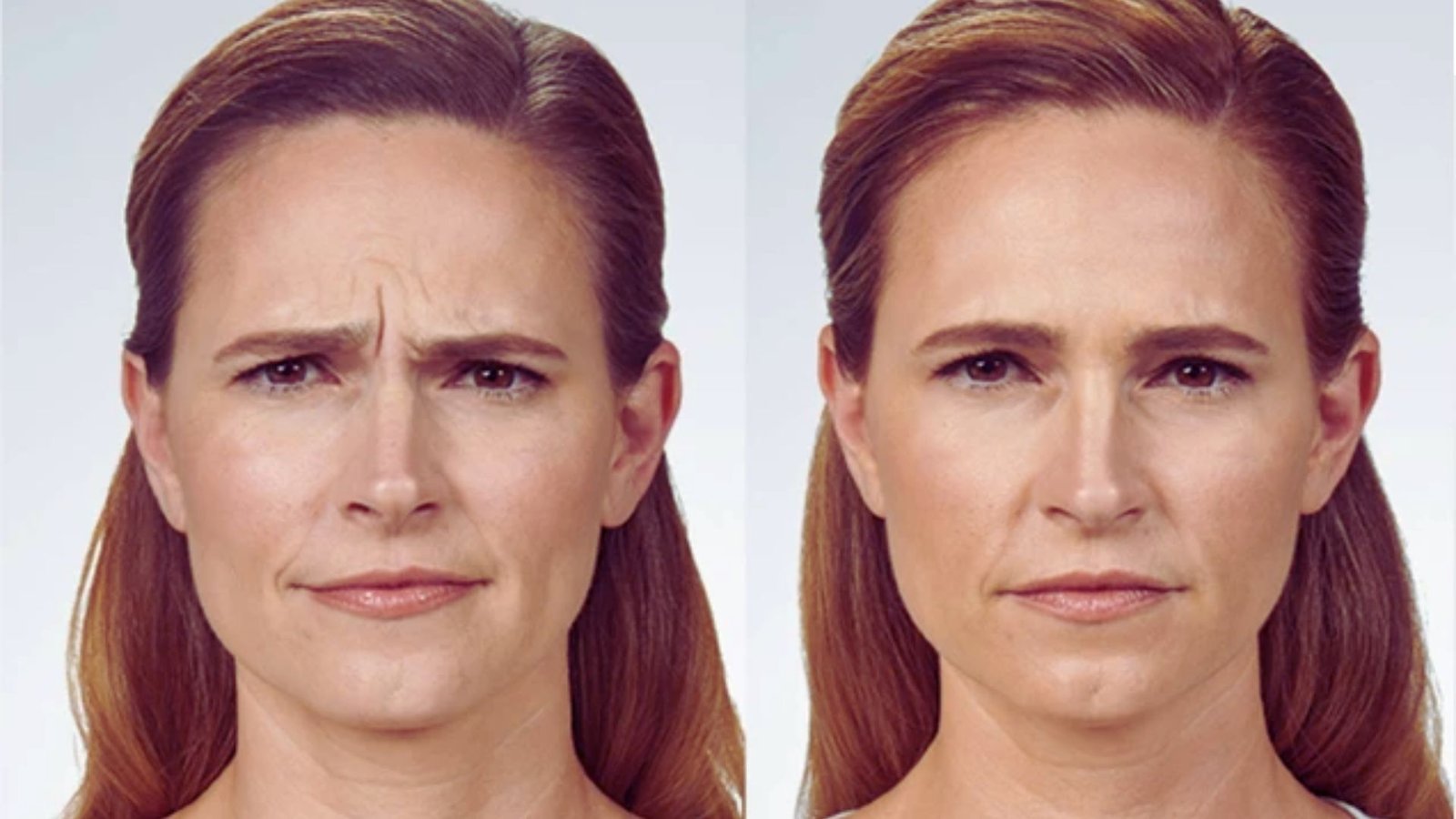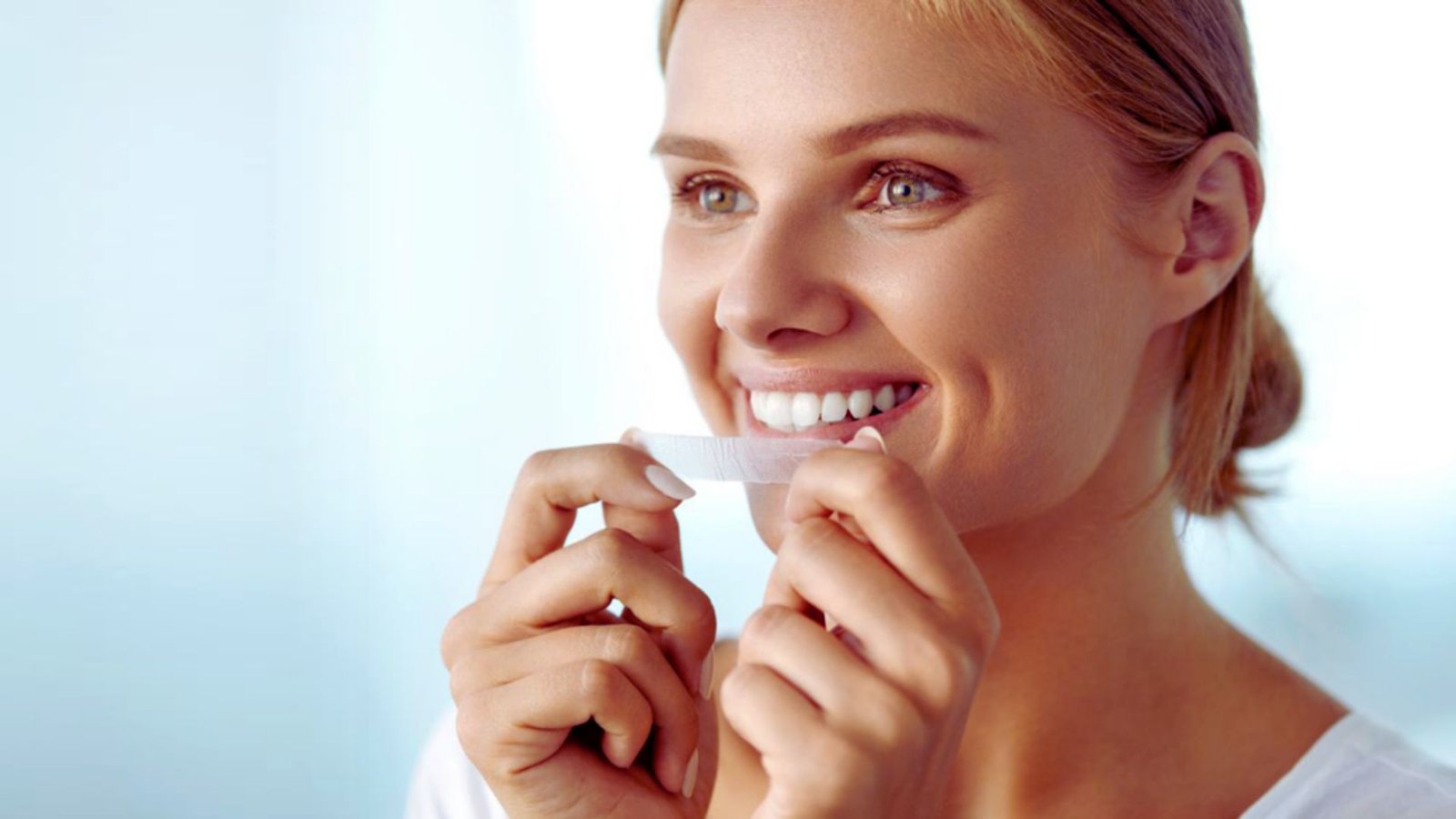Is Hyaluronic Acid Good for Rosacea?
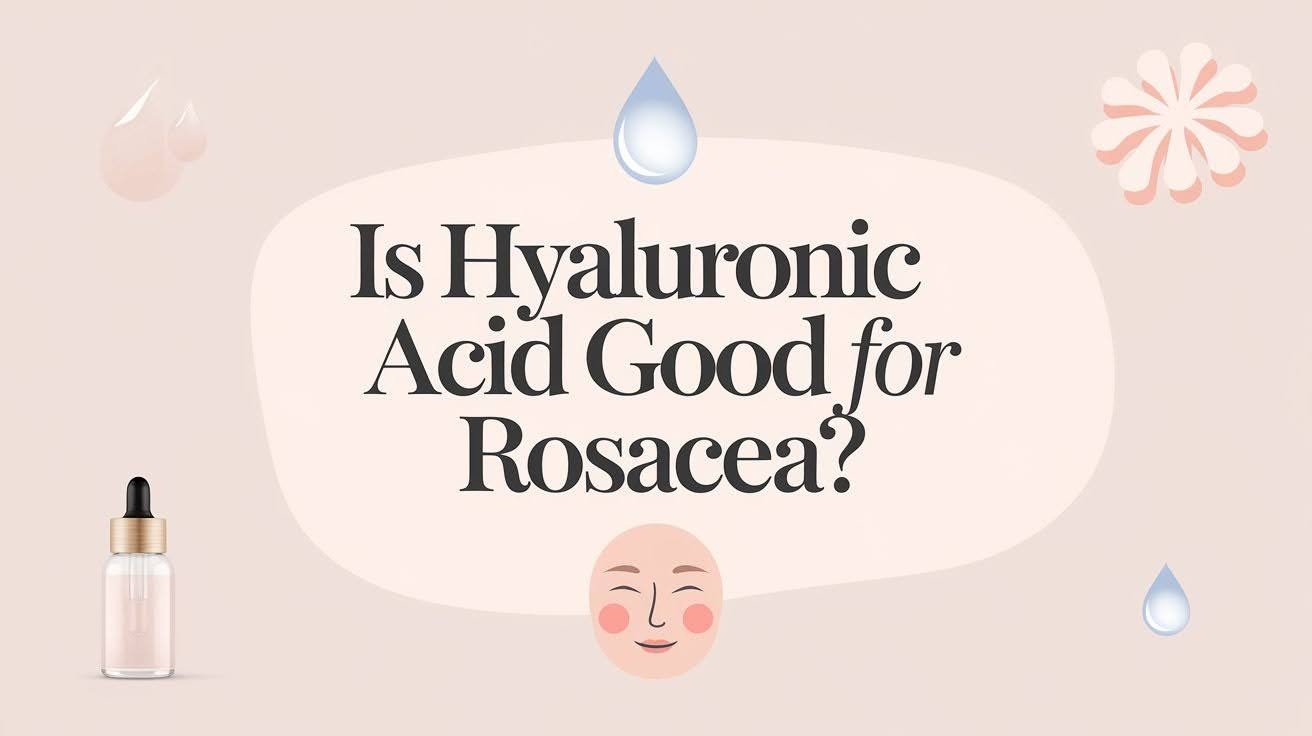
Living with rosacea can be challenging, as this chronic inflammatory skin condition affects millions of adults worldwide.
The persistent redness, visible blood vessels, and sensitive skin associated with rosacea often make finding suitable skincare products difficult. Many traditional moisturizers and treatments can worsen symptoms, leaving individuals searching for gentle yet effective solutions.
Hyaluronic acid has emerged as a promising ingredient for those managing rosacea-prone skin. This naturally occurring substance offers unique properties that address several key concerns associated with the condition.
From providing essential hydration without irritation to supporting compromised skin barriers, hyaluronic acid presents a science-backed approach to complementing existing rosacea management strategies.
This comprehensive guide examines how hyaluronic acid can benefit rosacea-affected skin and its role in daily skincare routines.
What Is Rosacea?

Rosacea is a chronic inflammatory skin condition affecting the central face, including cheeks, nose, chin, and forehead.
This persistent condition typically develops in adults over 30 and can worsen without proper management. It manifests as redness, visible blood vessels, and small bumps resembling acne.
Common Symptoms and Triggers
Key symptoms include persistent facial redness, visible blood vessels, small red bumps, and burning sensations. The skin may feel dry and rough, with some experiencing eye irritation.
Common triggers include sun exposure, hot beverages, spicy foods, alcohol, stress, extreme temperatures, harsh skincare products, wind, and intense physical activity.
Causes and Contributing Factors
The exact cause remains unclear, but contributing factors include genetics (often runs in families), abnormal facial blood vessels, immune system involvement, and environmental factors like sun damage. Microscopic mites and bacterial imbalances may also play a role.
Traditional Rosacea Treatments
Standard treatments include topical medications (metronidazole or azelaic acid gels), oral antibiotics for severe cases, and lifestyle modifications like trigger avoidance and gentle skincare routines.
Professional options include laser therapy and intense pulsed light for visible blood vessels. Daily broad-spectrum sunscreen (SPF 30+) remains essential, with physical sunscreens often working best for sensitive skin.
Understanding Hyaluronic Acid

Hyaluronic acid is a naturally occurring substance found in skin, joints, and eyes. This gel-like molecule can hold up to 1,000 times its weight in water, making it an excellent moisturizer. Natural production decreases with age, leading to drier skin.
What It Is and How It Works
Hyaluronic acid is a glycosaminoglycan that occurs naturally in connective tissues. Despite its name, it’s not acidic and won’t irritate skin. The molecule creates a mesh-like structure that traps water molecules.
When applied topically, it forms a moisture-retaining film and penetrates upper skin layers, binding with water to create a plumping effect. It comes in different molecular weights – low weight penetrates deeper while high weight stays on the surface.
Why It’s Popular in Skincare
Hyaluronic acid works with all skin types, including sensitive skin, and rarely causes irritation. It provides immediate visible results with plumper, more hydrated skin appearance.
The ingredient layers well with other skincare products without causing conflicts and can be used alongside retinoids or vitamin C. Its science-backed benefits and lightweight yet effective hydration make it a reliable choice for daily skincare routines.
Is Hyaluronic Acid Good for Rosacea?
- Supportive Benefits: Hyaluronic acid can be beneficial for rosacea-prone skin due to its gentle, hydrating properties, though it’s not a treatment for the underlying condition.
- Hydration Without Irritation: Provides intense moisture without heavy textures or irritating ingredients. Its lightweight consistency absorbs quickly without leaving residue, reducing risk of additional irritation.
- Prevents Dryness Triggers: Maintains proper hydration levels, which is crucial since dry skin can trigger rosacea flare-ups.
- Anti-inflammatory Properties: Research suggests mild anti-inflammatory benefits that may help calm irritated skin and reduce redness in some individuals.
- Cooling Relief: Provides temporary comfort during flare-ups with its cooling effect upon application.
- Barrier Restoration: Helps restore compromised skin barrier function by maintaining optimal hydration levels in the outer skin layer.
- Environmental Protection: A stronger skin barrier offers better protection against triggers like wind, temperature changes, and pollutants.
- Not a Cure: Hyaluronic acid is not a cure for rosacea and should not replace prescribed treatments.
- Supportive Role: Functions as a maintenance tool that works best as part of a comprehensive rosacea management plan including trigger avoidance, gentle skincare, and medical treatments.
- Enhancement Tool: Helps bridge gaps in care by providing consistent hydration and mild soothing effects alongside medical interventions.
Top Benefits of Hyaluronic Acid for Rosacea-Prone Skin

Hyaluronic acid offers several key advantages for individuals managing rosacea. Its gentle yet effective properties address common concerns associated with this sensitive skin condition while providing consistent support for daily skincare routines.
1. Enhanced Hydration
Hyaluronic acid delivers deep, long-lasting moisture without overwhelming sensitive skin.
It holds up to 1,000 times its weight in water, ensuring rosacea-prone skin stays adequately hydrated throughout the day.
This consistent moisture helps prevent dryness-triggered flare-ups and maintains skin comfort.
2. Barrier Repair and Protection
The ingredient strengthens the compromised skin barrier common in rosacea patients.
By improving barrier function, it helps protect against environmental triggers like wind, pollution, and temperature fluctuations.
A healthier barrier also reduces water loss and increases skin resilience against irritants.
3. Reduction in Redness and Flare-ups
Mild anti-inflammatory properties help calm irritated skin and may reduce the appearance of redness.
The cooling sensation upon application provides immediate comfort during active flare-ups.
Regular use can help maintain more stable skin conditions between treatment periods.
4. Safe for Sensitive Skin
Its natural occurrence in the body means excellent compatibility with sensitive, rosacea-prone skin.
The ingredient rarely causes adverse reactions or irritation, making it suitable for daily use even during active flare-ups.
It works well alongside prescribed rosacea treatments without interference.
5. Lightweight & Versatile for Daily Use
The non-greasy, fast-absorbing formula layers well under sunscreen and makeup. It can be used morning and evening without causing heaviness or clogged pores.
Its versatility allows incorporation into existing skincare routines without disrupting other treatments or products.
Choosing the Best Hyaluronic Acid Product

Selecting the right hyaluronic acid product for rosacea requires careful consideration of formulation and ingredients designed for sensitive, reactive skin.
What to Look For in Rosacea-Friendly Products
Choose products with minimal ingredients that are fragrance-free, alcohol-free, and free from essential oils, dyes, and harsh preservatives.
Look for multiple molecular weights of hyaluronic acid – low weight penetrates deeper while high weight creates surface protection.
Seek products with pH levels between 5.5 and 6.5 to match skin’s natural pH. Avoid combinations with active ingredients like AHAs or retinoids during flare-ups.
Look for third-party testing and dermatologist recommendations for added safety assurance.
Why Trilipiderm’s Rehydration Night Crème Stands Out
Trilipiderm’s Rehydration Night Crème combines multi-molecular weight hyaluronic acid with ceramides and lipids that restore skin barrier function. This combination addresses hydration, barrier repair, and inflammation control simultaneously.
The gentle formulation excludes common irritants while including soothing ingredients for reactive skin. Its rich yet non-comedogenic texture provides intensive overnight repair without clogging pores.
Clinical testing confirms compatibility with sensitive skin conditions, and the slow-release delivery system ensures consistent hydration during nighttime repair processes.
Tips for Using Hyaluronic Acid on Rosacea-Prone Skin
- Patch Test First: Test on a small area behind the ear for 24-48 hours before full facial application to check for adverse reactions.
- Choose Gentle Formulas: Select fragrance-free, alcohol-free products with minimal ingredients to reduce irritation risk.
- Avoid Irritants: Skip products with essential oils, menthol, or camphor that can trigger rosacea flare-ups.
- Combine with Supporting Ingredients: Pair with ceramides or niacinamide for enhanced barrier repair and anti-inflammatory benefits.
- Apply to Damp Skin: Use on slightly damp skin or in humid conditions to maximize water-binding effectiveness.
- Layer with Moisturizer: Always follow with a moisturizer to seal in hydration and prevent water loss.
- Start Small: Begin with small amounts once daily, preferably evening, before increasing frequency.
- Monitor Response: Adjust usage based on skin tolerance and climate conditions to prevent overuse and drying effects.
Final Thoughts
Hyaluronic acid can be a valuable addition to rosacea management routines when used correctly.
While not a cure, it provides gentle hydration, supports barrier repair, and offers mild anti-inflammatory benefits that complement medical treatments.
Its compatibility with sensitive skin makes it suitable for most rosacea patients seeking consistent moisture without irritation.
However, individual responses vary, and what works for one person may not work for another. Start slowly with patch testing and monitor your skin’s response carefully.
If you experience persistent redness, worsening symptoms, or uncertainty about incorporating new products, consult a dermatologist.
They can provide personalized guidance based on your specific rosacea type and severity, ensuring your skincare routine supports rather than compromises your treatment goals.
Frequently Asked Questions
Can hyaluronic acid worsen rosacea symptoms?
Hyaluronic acid is generally well-tolerated by rosacea-prone skin and rarely causes worsening symptoms. However, individual reactions can vary, so it’s important to patch test any new product before full application.
How often should I use hyaluronic acid if I have rosacea?
Start with once daily application, preferably in the evening, and gradually increase to twice daily if your skin tolerates it well. Monitor your skin’s response and adjust frequency based on your individual tolerance levels.
Can I use hyaluronic acid during a rosacea flare-up?
Yes, hyaluronic acid’s gentle, cooling properties can provide comfort during active flare-ups. Its anti-inflammatory benefits may help calm irritated skin, but always consult your dermatologist about managing active symptoms.
Should I use hyaluronic acid with my prescribed rosacea medications?
Hyaluronic acid typically works well alongside prescribed rosacea treatments without causing interference. However, always consult your dermatologist before adding new products to ensure they complement your current treatment plan.
What’s the best way to apply hyaluronic acid for rosacea-prone skin?
Apply hyaluronic acid to slightly damp skin and follow immediately with a gentle moisturizer to seal in hydration. This layering technique maximizes benefits while preventing potential drying effects in sensitive skin.

